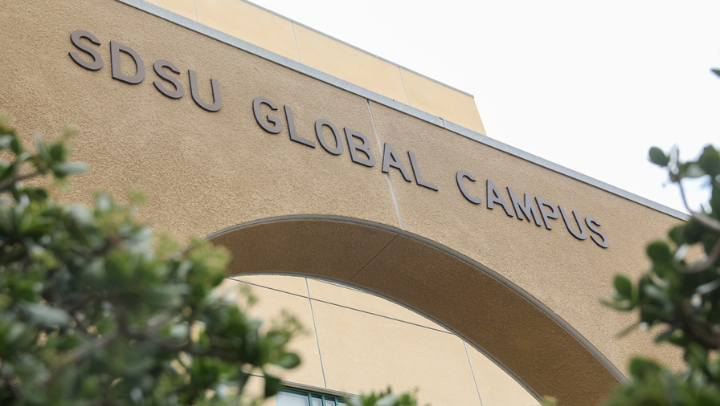Smoothing Pathways for STEM Students
An SDSU researcher is looking at difficult transitions from community colleges to universities as part of an NSF initiative at Hispanic-Serving Institutions.

“For many students, the post-secondary experience is not just starting at one college and finishing there.”
For underrepresented students seeking a STEM degree across two or more educational institutions, success can be impeded by something as simple as finding the right mentor.
Acquiring a sense of belonging can be difficult as well in the transition from community college to a four-year university. The required math sequence or course work to achieve a particular goal might be unclear. In some cases, finding transportation from one site to another becomes an issue.
A San Diego State University researcher will seek a greater understanding of these complex STEM pathways and barriers under a $1.5 million grant from the National Science Foundation (NSF), part of a concerted effort to support undergraduates in science, technology, engineering and mathematics fields. Felisha Herrera Villarreal’s five-year grant is among 31 projects funded by a new NSF program to increase retention and graduation rates in STEM programs at Hispanic-Serving Institutions (HSI) such as SDSU.
SDSU was designated a Hispanic-Serving Institution by the Department of Education in 2012, providing access to a larger number of grants and scholarships. More than 30 percent of undergraduate students at SDSU identify as Hispanic or Latino, according to fall 2017 statistics.
One of Herrera Villarreal’s objectives is addressing apparent inequities in STEM education. Demographic data shows that Hispanic, African-American and American Indian students “have pretty similar rates of interest in STEM majors,” said Herrera Villarreal, an assistant professor of postsecondary education and community college leadership in SDSU’s College of Education. “But we see different outcomes in terms of completing STEM degrees.”
Her research will look specifically at underrepresented students who begin their STEM education in community college.
“For many students, the post-secondary experience is not just starting at one college and finishing there,” she said. Although some students choose the traditional route, transferring to a university after two years at community college, others try to juggle classes at two or more institutions simultaneously, or move back to community college from a four-year institution. That can be a tough road. One STEM student who had attended two community colleges prior to her SDSU transfer told Herrera Villarreal, “having a support system makes a difference significantly.”
Herrera Villarreal will be examining the policies and programs affecting student mobility between HSIs with an eye toward developing programs to support and ease those transitions. With HSIs, which number 11 in San Diego and Imperial counties alone, “we really have an opportunity to have some large-scale programs and efforts” to find ways to improve the partnerships, she said.
The research expands upon work conducted at SDSU’s Research and Equity Scholarship Institute on Student Trajectories in Education, which Herrera Villarreal founded in 2016.
Under the NSF grant, RESISTE plans to continue analyzing national data obtained from the U.S. Department of Education and regional data from partnering colleges in San Diego, while taking a more individual look at the issue through interviews with students and educators, staff and administrators. “We want to get a sense of their perception of the challenges and barriers,” Herrera Villarreal said.



